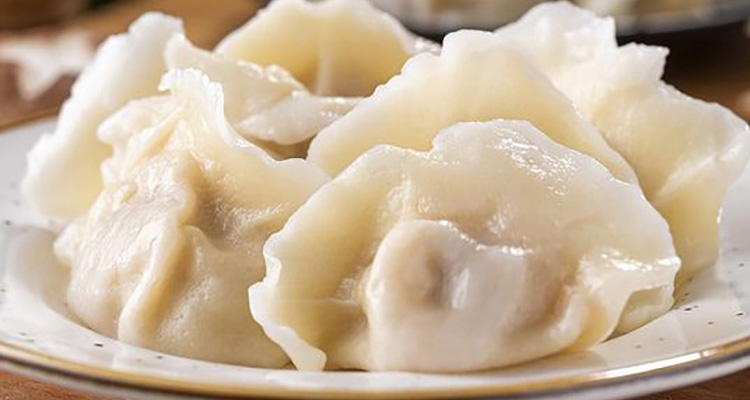Laobian Dumplings — The Heartwarming Taste of Northeast China
1. Origins and Heritage of Laobian Dumplings
Thin wrappers, juicy fillings, and a burst of hot soup with every bite — that’s the charm of Laobian Dumplings, a true comfort food from Northeast China. Known locally as Lao Bian Jiaozi (老边饺子), this dish represents the warmth, hospitality, and hearty spirit of the Dongbei people. It’s not just food — it’s a bowl of culture and affection wrapped in dough.
Laobian Dumplings trace their roots back to the Qing Dynasty, more than 200 years ago. The recipe was first created by the Laobian family in the Northeastern provinces. What began as a humble street snack soon became a regional icon, loved for its flavorful fillings and tender texture. Over time, Laobian Dumplings grew into a cultural symbol — no festive table in Dongbei is complete without them.
Even today, many families in Shenyang, Harbin, and Changchun still gather around to make these dumplings during festivals, especially during the Spring Festival (Chinese New Year). Sharing dumplings isn’t just a meal — it’s a ritual of reunion, symbolizing luck, family unity, and good fortune.

2. Ingredients, Craftsmanship, and Flavor Profile
What makes Laobian Dumplings stand out is the balance between the thin, chewy wrapper and the juicy filling. The dough is made from high-gluten wheat flour, kneaded until smooth and elastic. The filling usually features fresh pork, mixed with seasonal vegetables like cabbage or chives, then seasoned with ginger, scallions, soy sauce, and sesame oil — all sourced from local farms in Northeast China.
Each dumpling is handmade with skill and patience. The dough is rolled into thin, round skins; the filling is carefully wrapped and sealed into a yuanbao (silver-ingot) shape, symbolizing wealth and prosperity. The cooking process requires precision — boiled in hot water for about 10–15 minutes, or pan-fried to golden perfection. When the dumplings float to the surface, they’re ready — soft, juicy, and full of aroma.
The first bite reveals the soft, elastic wrapper, followed by the burst of savory juice inside. The pork filling carries a gentle saltiness, while the vegetables bring freshness and crunch. Each mouthful delivers a satisfying mix of flavor, warmth, and nostalgia that keeps you wanting more.

3. Cultural Meaning and Dining Experience
In Northeast China, dumplings mean togetherness. During holidays, families sit around the table, chatting and laughing while wrapping dumplings — a ritual passed down through generations. Serving Laobian Dumplings to guests is considered the highest sign of hospitality. A steaming plate of dumplings not only satisfies hunger but also conveys respect, warmth, and heartfelt welcome.
The traditional way to enjoy them is simple but meaningful. Once cooked, the dumplings are served hot and dipped into a sauce made of vinegar, soy sauce, mashed garlic, and sometimes chili oil for extra heat. Locals often say, “First sip the soup, then taste the heart.” So, bite off a small corner, drink the delicious broth inside, and then enjoy the rest in one hearty bite. Pair it with a bowl of hot broth — that’s how Dongbei people show their bold and generous food culture.
Where to Try Authentic Laobian Dumplings
If you’re traveling across Northeast China, several places serve the most authentic Laobian Dumplings.
- Laobian Dumpling Restaurant (Shenyang Main Branch) – the birthplace of this legendary dish.
- Harbin Central Street Dumpling Houses – combining history and cozy winter vibes.
- Traditional Restaurants in Changchun – offering local flavors with modern touches.
A typical meal costs around 30–80 RMB per person, making it both affordable and satisfying. Dumplings are usually sold by weight — one “liang” equals about five to six dumplings — and it’s best to order mixed flavors to experience a variety of fillings.
Home-Cooking Version: Easy Laobian Dumplings at Home
You don’t need to travel far to taste Laobian Dumplings. Try making them at home!
Use store-bought dumpling wrappers, and prepare the filling with minced pork, chopped cabbage, and simple seasonings. Wrap them tightly, then boil or pan-fry until golden. For dipping sauce, mix soy sauce and vinegar, and add a touch of garlic for aroma.
While homemade versions may not rival the restaurant’s perfection, they carry something special — the warmth of family gatherings and the joy of sharing food made with love.

Fun Fact and Travel Tip
In English, Laobian Dumplings are often called “Northeast Laobian Dumplings.”
The best time to enjoy them is right after they’re cooked, when the soup inside is still hot and flavorful. If you visit Northeast China in winter, try both the boiled and pan-fried (Guo Tie) versions — crispy outside, juicy inside.
Most dumpling restaurants offer free dumpling soup (made from the cooking broth). Locals believe it “completes the meal,” helping digestion and preserving warmth — a true Dongbei tradition.

A Bite of Culture and Warmth
Trying Laobian Dumplings is more than tasting food — it’s experiencing Dongbei hospitality. Each bite carries stories of generations, festivals, and family love.
So next time you visit Northeast China, make sure Laobian Dumplings are at the top of your must-eat list. Let this juicy, flavorful dumpling become your most delicious memory of Dongbei cuisine!


